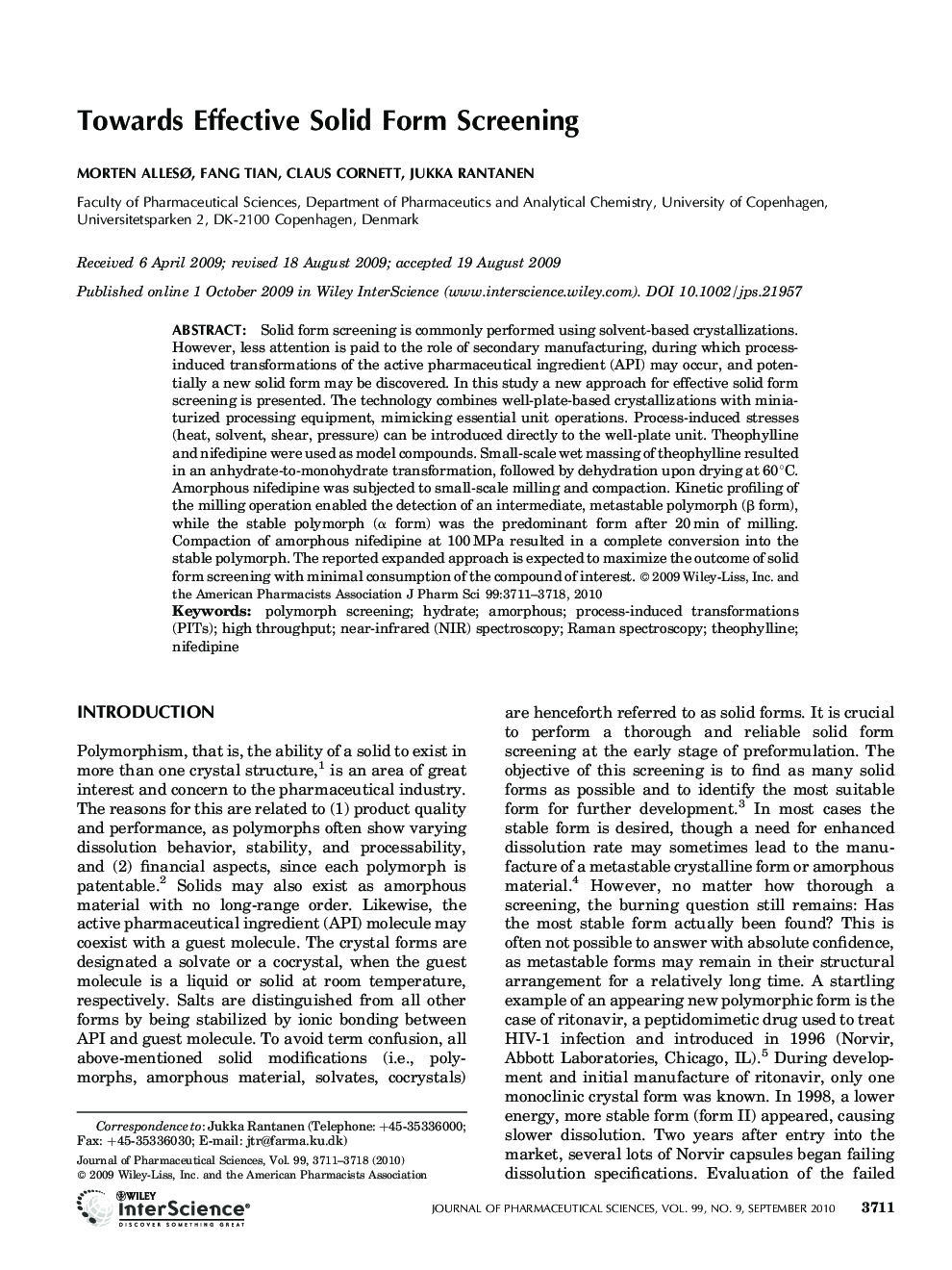| Article ID | Journal | Published Year | Pages | File Type |
|---|---|---|---|---|
| 2486737 | Journal of Pharmaceutical Sciences | 2010 | 8 Pages |
ABSTRACTSolid form screening is commonly performed using solvent-based crystallizations. However, less attention is paid to the role of secondary manufacturing, during which process-induced transformations of the active pharmaceutical ingredient (API) may occur, and potentially a new solid form may be discovered. In this study a new approach for effective solid form screening is presented. The technology combines well-plate-based crystallizations with miniaturized processing equipment, mimicking essential unit operations. Process-induced stresses (heat, solvent, shear, pressure) can be introduced directly to the well-plate unit. Theophylline and nifedipine were used as model compounds. Small-scale wet massing of theophylline resulted in an anhydrate-to-monohydrate transformation, followed by dehydration upon drying at 60°C. Amorphous nifedipine was subjected to small-scale milling and compaction. Kinetic profiling of the milling operation enabled the detection of an intermediate, metastable polymorph (β form), while the stable polymorph (α form) was the predominant form after 20 min of milling. Compaction of amorphous nifedipine at 100 MPa resulted in a complete conversion into the stable polymorph. The reported expanded approach is expected to maximize the outcome of solid form screening with minimal consumption of the compound of interest. © 2009 Wiley-Liss, Inc. and the American Pharmacists Association J Pharm Sci 99:3711–3718, 2010
